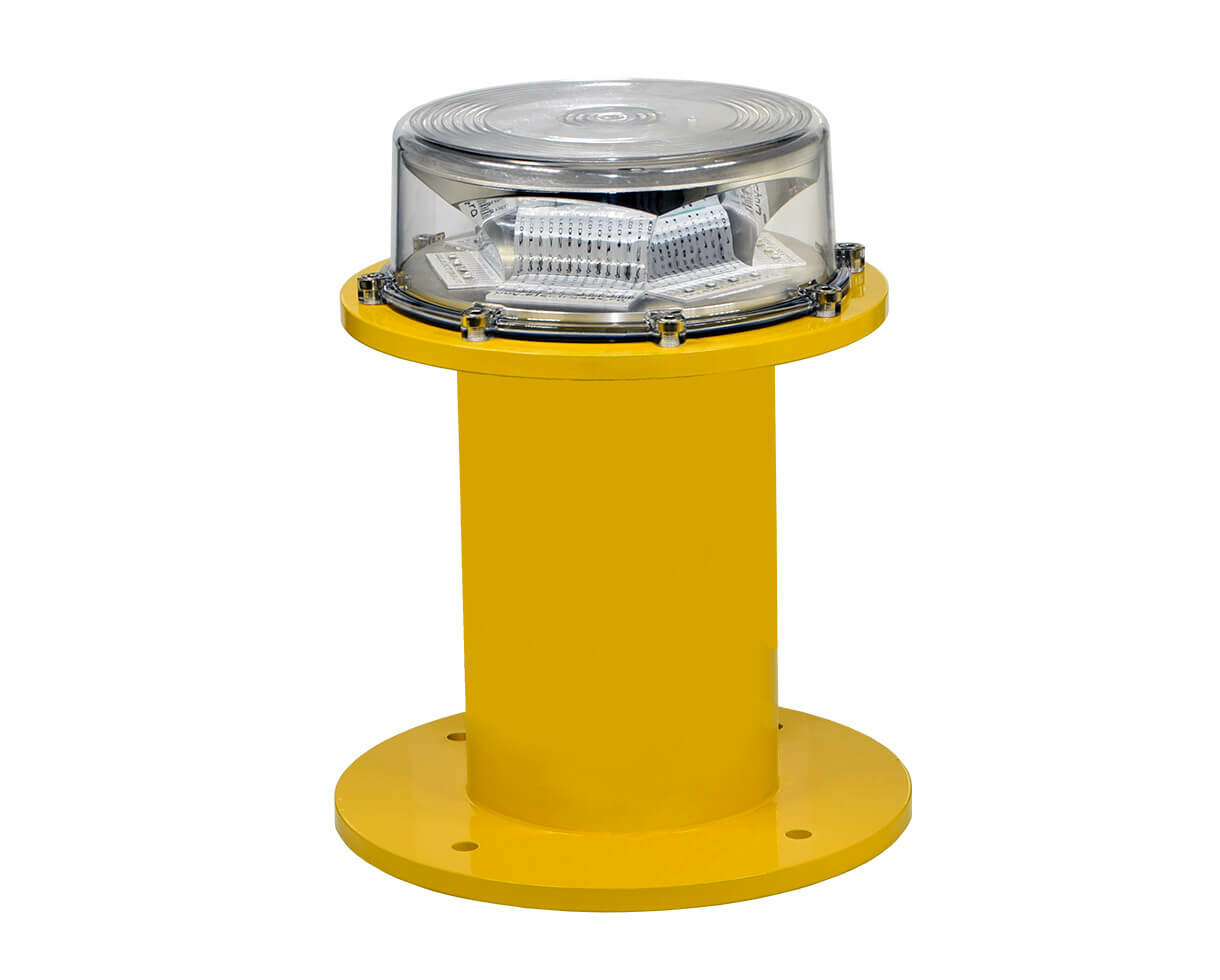
Quasar Type C Double (Twin)
AL-OBS-21-XXX
See product detailsObstruction lights for aerial obstacles of more than 45 m. High structures are demanding obstruction lights to ensure their visibility. Medium intensity obstruction lights are special designed to mark aerial obstacles like towers, buildings, wind generators, antennas.

AL-OBS-21-XXX
See product details
AL-OBS-14-XXX
See product details
AL-OBS-20-XXX
See product details
AL-OBS-13-XXX
See product details
AL-OBS-15-XXX
See product details
AL-OBS-12-XXX
See product detailsFor aviation obstacles higher than 45 m, according to ICAO medium intensity obstruction lights must be used. The obstacles can be buildings, cranes, towers, chimeneas, High voltage network pylons, etc.
During the day stronger lights must be used, flashing, 20000 cd WHITE color, omnidirectional beam. This light can also be used during the night but must be dimmed to 10% so just 2000 cd. This is the type A medium intensity light.
There are other obstruction lights for use just during the night time. These are types B and C.
The obstruction light type B is flashing RED, 2000 cd. It can be used alone or in combination with low intensity obstruction lights type B.
The obstruction light type C is steady RED, 2000 cd.
These lights can have internal light sensors for day/night mode.
If more flashing lights are used on a structure all of them must be synchronized. This is made usually utilizing a controller or using GPS synchronization.
We can even integrate UPS into the obstruction lights for powering the lights if the main power supply fails.
We can create many obstruction lighting systems, with redundancy, dual input power voltages, and combined A/C or A/B obstruction lights. We can have double C type or double B type.
The controllers can also be customized to signal the failures and to communicate the failures to the BMS systems.
Everything is possible, just tell us what you need.